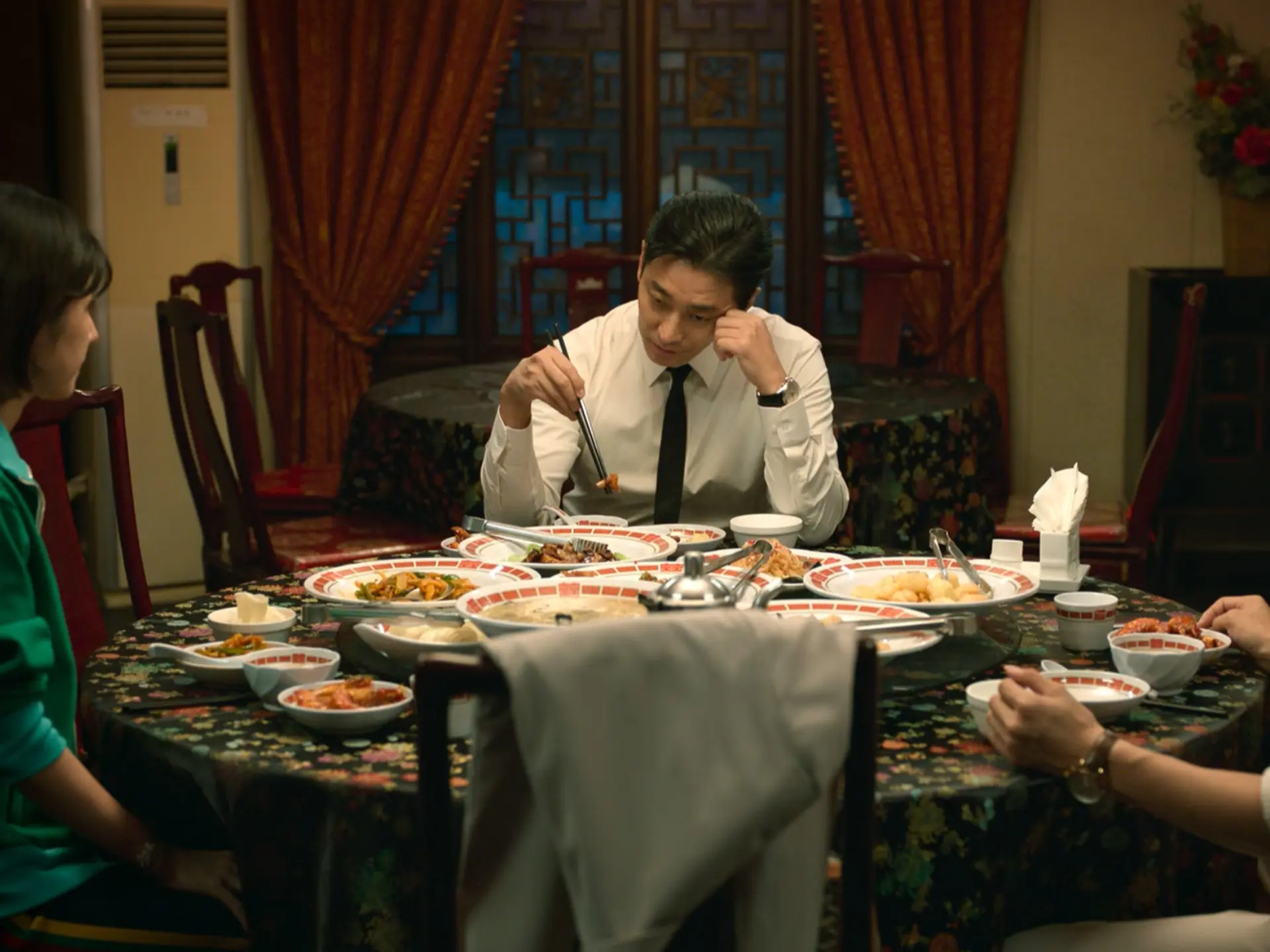Have you watched The Trauma Code: Heroes on Call, the #1 popular Korean drama on Netflix? This medical drama follows Baek Kang-hyuk, a genius trauma surgeon who joins the severe trauma team at a university hospital and saves critically injured patients at the trauma center. The K drama realistically portrays the shortage of medical staff and the challenging conditions in trauma centers in South Korea, while showing the dedication and sense of duty of the doctors who strive to save lives. Today, let’s explore Korean drama food!
Table of Contents
Mukbang
One of the highlights of this Korean drama is Dr. Baek Kang-hyuk’s mukbang scenes. Beginning with a McMorning mukbang, he shows a variety of meals enjoyed by Koreans, including Korean-Chinese cuisine and other classic dishes.
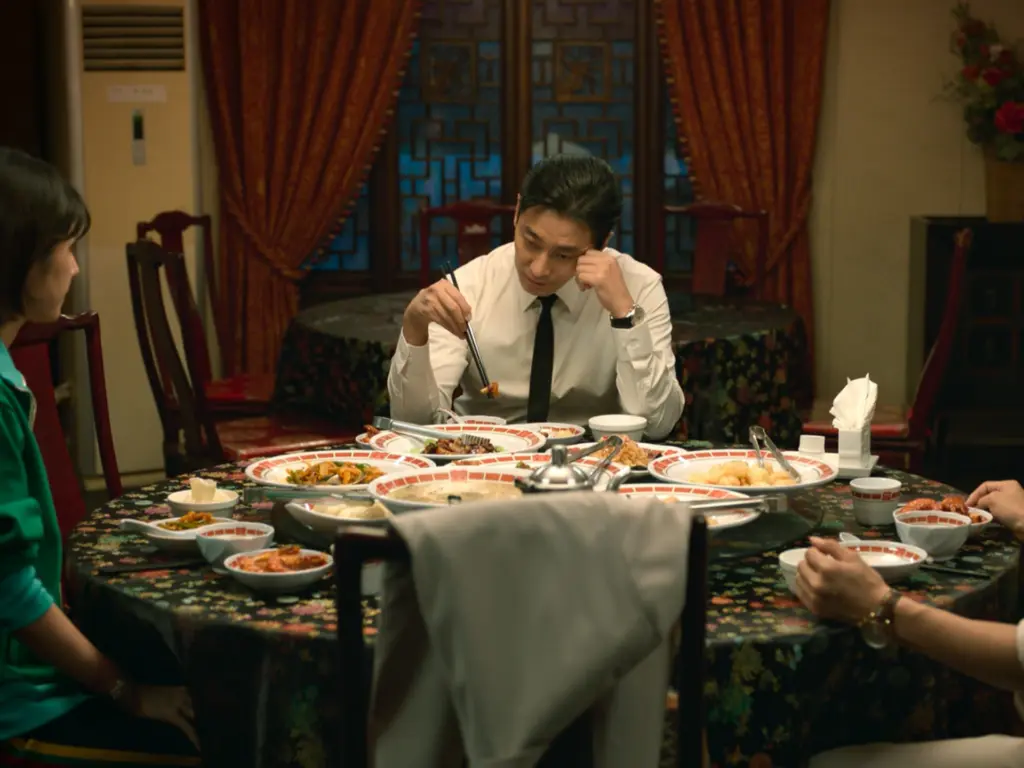
A. Chinese Food
Koreans eat Chinese food quite often, but it has been adapted to suit local tastes, making it quite different from authentic Chinese cuisine.
See the yellow side dish on the table in the photo below? That’s danmuji (pickled radish). In Korea, every Chinese restaurant serves danmuji as a side dish, but it’s not a common side dish in China. I’ll explain more about this when I introduce Korean-style Chinese food in detail below.
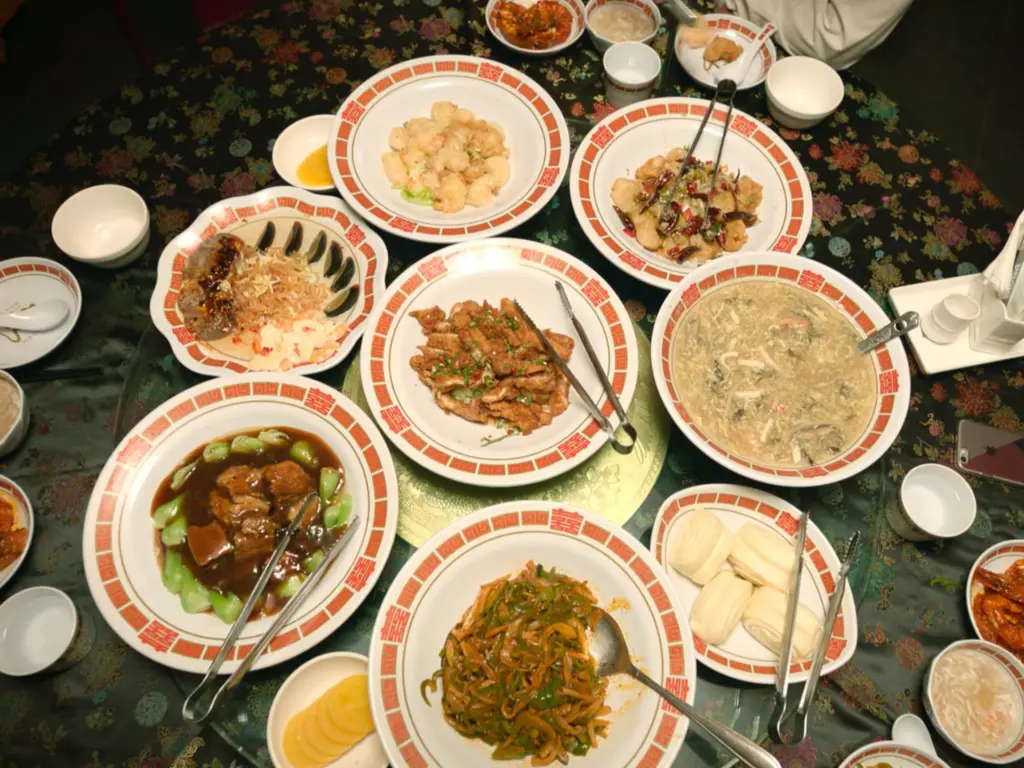
The dishes in the photo are popular in Korean-Chinese restaurants.
- The dish at the bottom center, along with the bread next to it, is gochu japchae (stir-fried pork with peppers) and kkotbbang (steamed buns). The buns are stretched open and used to wrap the stir-fried pork and peppers.
- On the left, the bok choy and meat dish is dongpayuk (braised pork belly). This dish features thick layers of fatty pork belly simmered for hours in a soy sauce-based glaze, resulting in a tender and flavorful bite.
- The centerpiece is ggwabarou, a Korean-Chinese adaptation of sweet and sour pork. Thinly sliced pork is deep-fried and coated in a spicy, sweet sauce. It tastes similar to the tangsuyuk you may be more familiar with.
- The white dish at the top center is cream shrimp-shrimp fried in potato starch and coated in a mayonnaise-based sauce, sometimes with cream added for extra richness.
- The soup on the right appears to be crab meat soup, made by simmering egg and crab meat into a thick, savory broth.
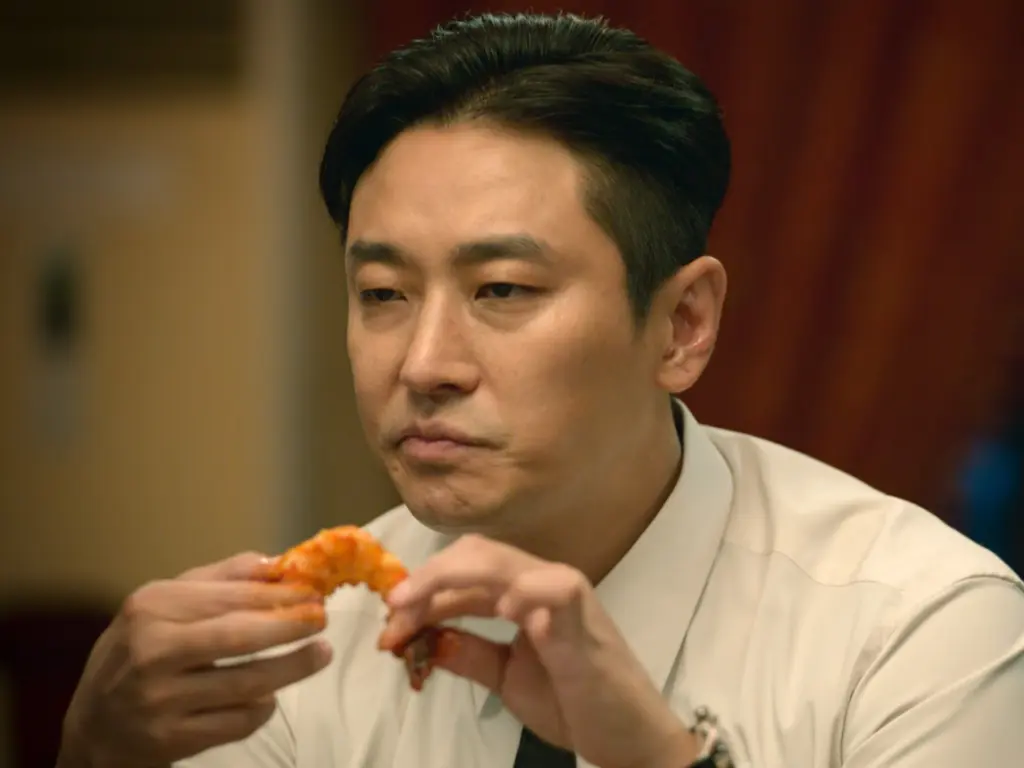
The dish Baek Kang-hyuk is holding and eating appears to be kkansho shrimp (chili shrimp). This dish features shrimp coated in potato starch, deep-fried to a crispy texture, and then stir-fried in a chili sauce or doubanjiang (fermented bean paste). It’s a relatively expensive dish but remains a popular favorite among Koreans when dining at Chinese restaurants.
B. Korean Chinese Food
Chinese food in Korea has been adapted to local tastes and is known as Korean Chinese food. Some of the most iconic examples are jajangmyeon (black bean noodles), jjamppong (spicy seafood noodle soup), tangsuyuk (sweet and sour pork), and danmuji (pickled radish). These dishes have evolved to become uniquely Korean, distinct from traditional Chinese cuisine.

a. Jajangmyeon (Black Bean Noodles) 짜장면
The dish Baek Kang-hyuk is eating in the photo is jajangmyeon, one of the most iconic Korean Chinese dishes. It consists of stir-fried chunjang (black bean paste) cooked with onions, cabbage, and pork, then mixed with noodles or stir-fried together.
Korean jajangmyeon evolved from the Chinese dish zhájiàngmiàn (炸酱面), but the two taste quite different. The Chinese version uses a drier, saltier sauce, while the Korean version is sweeter, has more moisture, and is less salty.
Varieties of Jajangmyeon
- Gan-jjajang (Dry Jajangmyeon): Unlike regular jajangmyeon, where the sauce is poured over the noodles, gan-jjajang is stir-fried separately and served without broth, resulting in a more intense black bean flavor and a slight smoky taste.
- Yetnal Jjajangmyeon (Old-fashioned Jajangmyeon): This version has a thinner sauce with added potatoes, giving it a milder taste. It’s commonly found at highway rest stops in Korea.
- Samseon Jjajangmyeon (Seafood Jajangmyeon): A premium version made with shrimp, squid, and other seafood.
- Sacheon Jjajangmyeon (Spicy Jajangmyeon): A Sichuan-style variation made with doubanjiang (fermented chili bean paste), which gives it a red color and a spicy kick.
- Jjajang-bap (Black Bean Sauce with Rice): Since Koreans love rice, many enjoy jajang sauce mixed with rice instead of noodles.
- Jjajang Ramen (Instant Black Bean Ramen): The most famous brand is chapaghetti, an instant noodle version with a unique taste, different from traditional jajangmyeon, but popular in Korea.
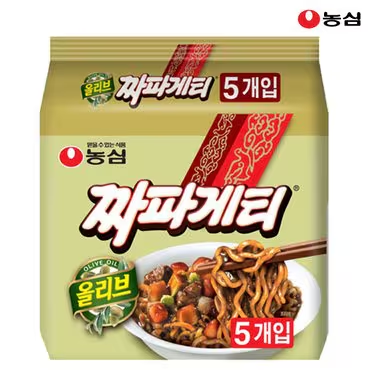
Get here: https://amzn.to/4iagUrz (US), https://amzn.to/41w3qPH (DE), https://amzn.to/4i8P66O (NL)
- Jjengban Jjajang (Platter Jajangmyeon): A large portion of stir-fried noodles and sauce served on a shared platter, typically ordered for multiple people.
b. Danmuji (Pickled Radish) as a Side Dish
In Korean-Chinese cuisine, danmuji (yellow pickled radish) is always served as a side dish. Most Koreans are not accustomed to eating overly fatty foods, and the pungent taste of danmuji helps cleanse the palate while stimulating the appetite.
One theory about the origin of danmuji in Korean Chinese restaurants dates back to the Japanese colonial period. It is said that danmuji began to be served because many Japanese customers ate at Chinese restaurants in Korea.

In the photo, Baek Kang-hyuk’s danmuji has some black sauce on it. This is chunjang (black bean paste), which is usually served with jjajangmyeon in Korea. When ordering jajangmyeon, it is usually served with raw onions, danmuji, and a small bowl of chunjang. Koreans often dip onions and danmuji in chunjang to balance the richness of the dish.
c. Gunmandu (Fried Dumplings)
One of the must-have dishes in Korean-Chinese cuisine is gunmandu (fried dumplings). These dumplings are deep-fried to achieve a crispy exterior while keeping the interior moist and flavorful. Unlike some cuisines where dumplings are eaten as a main dish, Koreans usually enjoy gunmandu as a side dish with jajangmyeon or other noodle and rice dishes.

When eating gunmandu at a Korean-Chinese restaurant, many people dip them in soy sauce, but as seen with Baek Kang-hyuk, some prefer to dip them in tangsuyuk (sweet and sour pork) sauce. The sweet and sour flavor of the sauce pairs perfectly with the crispy dumplings. Gunmandu is also delicious when dipped in jjajang sauce.
When I was younger, gunmandu was often served as a complimentary dish for customers who ordered a large meal or were regulars at the restaurant. Unfortunately, with the rising cost of food, such complimentary service is rare these days.

You don’t have to live in Korea to enjoy delicious mandoo. Here’s a recipe for cheese mandu. It shows how to cook dumplings so that they are crispy on the outside and juicy on the inside. How about this as a snack to go with drinks today?
d. Tangsuyuk (Sweet and Sour Pork)

The dish on the large platter in the photo is tangsuyuk, a typical Korean Chinese dish. It’s one of the most familiar dishes when you think of Korean Chinese cuisine. Tangsuyuk consists of crispy fried pork with a thick, tangy-sweet sauce.
An important rule when eating tangsuyuk is not to pour the sauce directly over the fried pork. In Korea, there are two distinct camps: those who pour the sauce over the fried pork and those who dip the pork in the sauce. This can lead to heated debates, and I’m not kidding. This simple act can even spark a little “battle” at the table! Ha-ha.
C. Korean Convenience Store Food
You might have seen convenience stores a lot in Korean dramas. Korea, like Japan, is known for its well-developed convenience store culture. For busy office workers and students, convenience stores offer quick meals and snacks, providing a sweet little escape during hectic days.
Korean convenience stores are stocked with a variety of cup noodles, kimbap, and ready-to-eat lunch boxes. They also provide chairs and tables for customers to sit and enjoy their meals. Hot water dispensers and microwaves are readily available for customers to prepare their food. Some convenience stores even sell Korean fried chicken!
In addition to offering meals, Korean convenience stores regularly introduce trendy snacks to keep the experience fresh and exciting for customers, making it not only a place to grab food, but also a fun and diverse food destination.

a. Banana Milk 바나나맛 우유
The yellow drink that Baek Kang-hyuk and Choo Young-woo are drinking in the photo is banana milk, one of the most iconic and popular convenience store snacks in Korea. First introduced in the 1970s, Binggrae Banana Milk has been a favorite of Koreans from my parents’ generation to mine. Its unique container shape is inspired by traditional Korean jars. Today, you can even find it in countries like the U.S. and Canada.
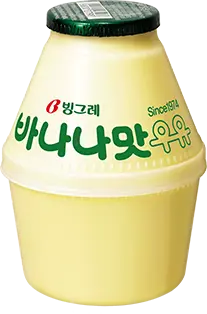
- Get here: https://amzn.to/41RvWLP (US)
b. Cream Bread 크림빵
The bread Baek Kang-hyuk is holding in his right hand is a classic Korean convenience store snack: sweet cream-filled cream bread. There are so many kinds of cream bread in Korea that it’s hard to tell which brand he’s eating. But I’ll recommend one of the most popular ones that Koreans love.
- Yonsei Milk Cream Bread
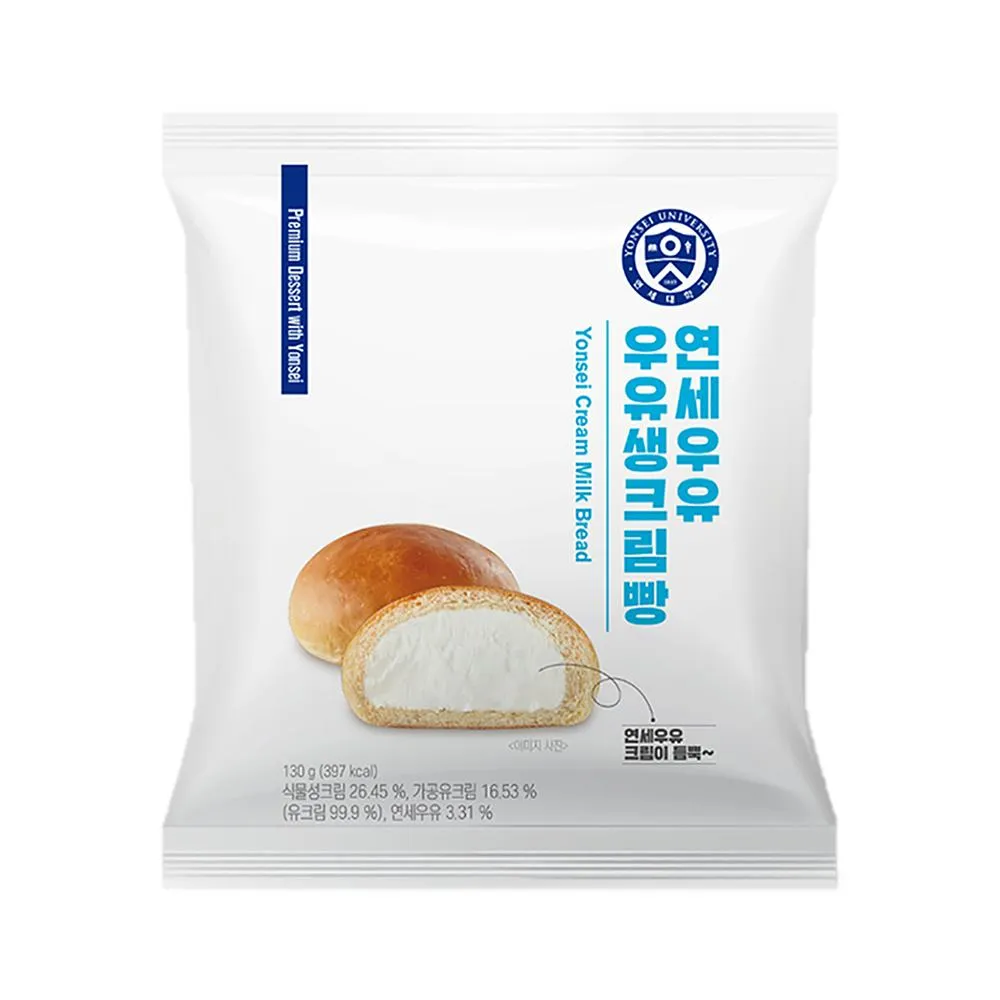
Yonsei Milk Cream Bread is so popular in Korea that it accounts for 60% of dessert sales at the CU convenience store chain. Unlike traditional cream breads, which have only a little cream inside, Yonsei Milk Cream Bread is filled with smooth, sweet cream that floods your mouth with every bite.
Koreans even freeze this bread to enjoy it like an ice cream treat. Due to its popularity, Yonsei Milk Cream Bread has inspired other variations such as Chocolate Cream Bread and Melon Cream Bread. This is one of the convenience store snacks I miss the most. I highly recommend that you try it when you visit Korea!
